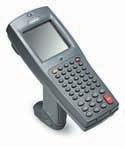January 1, 2003
Originally Published MPMN January/February 2003
PROFILE
Radio-Frequency Network Cuts Distribution Costs
Handheld units provide real-time resource planning updates
|
The RF system increased efficiency |
Specializing in the manufacture of pediatric products, Hollister Inc. (Libertyville, IL; www.hollister. com) supplies a variety of devices used in breast-feeding, hospital risk management, and ostomy and wound care. But when the company recently switched from plant-based distribution to a central distribution center, it found that it did not achieve the desired level of order fulfillment productivity and accuracy. To help alleviate these problems, the company contacted solutions integrator Peak Technology (Columbia, MD; www. peaktech.com) about installing a radio-frequency (RF) network to provide real-time updates to its enterprise resource planning (ERP) system.
"The biggest problem with our old system was the manual nature of the transactions," explains Hollister supply-chain logistics manager Lonny Hourigan. "The entire system ran on paper, which meant that a high proportion of our staff was dedicatedto data entry. We felt that the next logical step to get our ERP system running efficiently was to use radio frequency for automated data collection," he says. According to Hourigan, Peak Technologies was selected to help Hollister achieve this goal because of the company's willingness to tailor an RF system to suit its unique requirements.
After reviewing Hollister's paper-based system, Peak Technologies recommended a network of handheld RF terminals based on its SAP R/3interface. Hollister implemented the network and noticed an instant improvement.
"The RF system has increased efficiency in every aspect of the material-handling process, virtually eliminating manual data entry and time spent looking for product," says Hourigan. "The bottom line is that after only a few months of operation, we were able to reduce our cost per box by 6%, and we have experienced a 40% reduction in shippable backlog due to the improved speed at which receiving, storage, and replenishment are accomplished." Other cited benefits include a 9% reduction in labor costs and a 50% cut in dock-to-order cycle times.
The new RF-based distribution process used by Hollister begins when the products are still at their manufacturing facilities. Shipping crews at these locations scan each product prior to transport, generating a bar code that is scanned again when the goods arrive at the distribution center. This second scan causes the system to generate a move ticket that is displayed on the receiving worker's handheld scanner, telling him or her exactly where to place the goods. After the goods are successfully stored, the products immediately appear as being available for sale in the central ERP system.
To ensure that goods can be shipped from the distribution center in a timely manner, the RF system also automatically generates refill orders when products in the storage racks near the shipping dock fall below minimum levels. This replenishment order is transmitted to a worker on the floor, who scans the required products when he picks them up and again when he deposits them in the specified location. Should the wrong products be picked up or delivered to the wrong location, the worker is automatically informed of the mistake and instructed to correct it.
The handheld units again come into play when the goods are shipped out. At this stage, the required products are sent via conveyor to the packing area, where they are scanned a final time. The ERP system uses this scan to generate an advance shipping notice and adjust pick-face levels. The goods are then placed into shipping cartons and moved to a metering area, where an address label is automatically waiting.
According to Hourigan, Hollister is so pleased with this system that it plans to expand its use to its manufacturing facilities and European distribution center in the near future. And though he is certainly impressed with the wireless system, he credits much of the project's success not to the technology, but to the company that supplied it. "Peak created a technical project plan that provided the perfect complement to our internal project team," says Hourigan. "We had weekly communications meetings throughout the project where we measured our progress, talked about questions and concerns, and made changes where necessary. Working closely together, we delivered the project on time and on budget," he says.
Copyright ©2003 Medical Product Manufacturing News
You May Also Like



